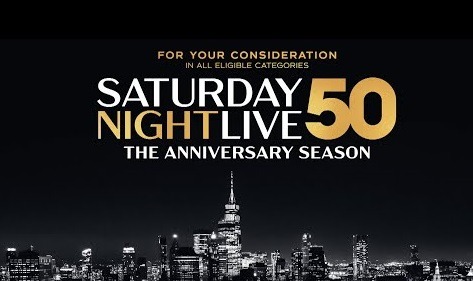Saturday Night Live: The Enduring Legacy of an American Institution
This article explores the five-decade history of Saturday Night Live (SNL), a show that has become a cornerstone of American comedy and culture.
ENTERTAINMENT
Muhammad Umaish
8/3/20253 min read


Saturday Night Live:
Five Decades of Live Comedy and Cultural Commentary
More than just a television show, Saturday Night Live (SNL) is a cultural institution that has both mirrored and shaped American life for five decades.1 It is a launchpad for comedic talent, a weekly ritual for millions of viewers, and a real-time commentator on the political and social landscape.2 Created by Lorne Michaels and Dick Ebersol, this live sketch comedy and variety show has called Studio 8H at NBC’s headquarters in New York City its home since its debut.3 A landmark of television, its enduring legacy is built on a foundation of groundbreaking comedy, unforgettable performances, and an unparalleled ability to stay relevant in a constantly changing world.4
The Unlikely Origin Story
The genesis of Saturday Night Live came from a seemingly unrelated event. In 1974, late-night host Johnny Carson requested that his reruns, which aired on weekend nights, be pulled to give him more time off. The newly available Saturday night time slot was a problem for NBC President Herbert Schlosser, who was tasked with finding a new program. He turned to Dick Ebersol, NBC's vice president of late-night programming, with a mandate to create a new show. Ebersol then brought in Lorne Michaels, a young Canadian producer, to develop a concept. Over the next few weeks, Michaels and Ebersol crafted the idea for a show that would appeal to younger viewers with its blend of high-concept comedy sketches, political satire, and live musical performances.
With a budget of just $250,000, Michaels took over Studio 8H, a space previously used for radio and election coverage. He quickly assembled a troupe of young, dynamic comedic actors.The initial cast, featuring comedic talents such as Dan Aykroyd, John Belushi, and Jane Curtin, was famously dubbed the "Not Ready for Prime-Time Players." Many of these performers were recruited from The National Lampoon Radio Hour, bringing with them a fresh and irreverent style of comedy.5 Though the show took a few episodes to find its footing, it quickly developed a loyal cult following. Its humor was seen as daring and refreshing, a stark contrast to the more traditional variety shows of the time.6
The Iconic Formula
The format of Saturday Night Live is now a well-established tradition. Each episode is a two-hour spectacle that blends a consistent structure with the unpredictable energy of live television. It begins with a cold open, a sketch that often parodies a recent political or social event and ends with the now-iconic line, "Live from New York, it's Saturday Night!" These sketches, which are written, rehearsed, and performed in a single week, have become a showcase for the cast's versatility.
Beyond the host and the repertory cast, each episode features a musical guest whose performances provide a break from the comedy.7 The show's live nature means anything can happen, from technical glitches to intentional moments of breaking character.8 This element of spontaneity is a major part of its charm and a driving force behind its cultural impact.
A Constantly Evolving Legacy
Over the past five decades, Saturday Night Live has served as an unparalleled talent incubator.9 Many of its cast members have gone on to achieve national stardom in film and television.10 The careers of stars like Bill Murray, Eddie Murphy, Adam Sandler, and Tina Fey all began on the SNL stage.11 The show's influence also extends behind the camera; the show served as a launchpad for writers and producers who later became successful as showrunners, directors, and screenwriters..
The show's history is also defined by change. After a single season of bad reviews, Dick Ebersol stepped back in to run the show until Michaels’s triumphant return in 1985. Since then, Michaels has been the constant force at the helm, steering the show through countless changes in cast, politics, and pop culture.
The show's legacy is further cemented by its expansion into other media. Some of its most popular sketches have been adapted into successful feature films, including The Blues Brothers (1980) and Wayne's World (1992).13 The show's influence can also be seen in documentaries, books, and home media releases that offer a behind-the-scenes look at the creative process 14
An Award-Winning Institution
Saturday Night Live has amassed an incredible number of accolades throughout its long run.15 It holds the record for the most Primetime Emmy Award nominations for any television program in history, with over 305 nominations and 84 wins. It was also inducted into the National Association of Broadcasters Hall of Fame in 2000.16 Publications like TV Guide and Time have consistently ranked it among the greatest television shows of all time, a testament to its enduring quality and impact.
As it approaches its 50th season, Saturday Night Live remains an indelible part of the cultural landscape. It continues to be the place where emerging comedians are discovered and where the country’s most prominent figures, from presidents to pop stars, are skewered with sharp and timely humor. From the chaotic energy of its early years to its status as a late-night powerhouse today, the show has proven to be a resilient and ever-evolving force in American comedy, securing its place as an indelible part of television history.
